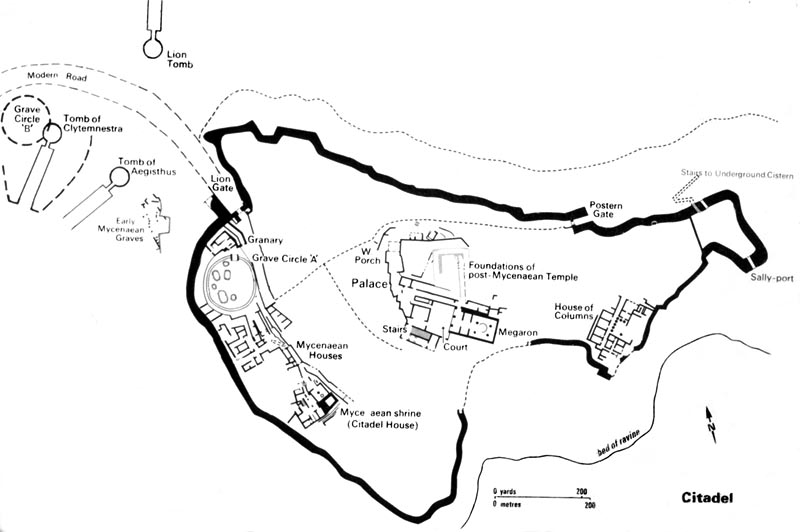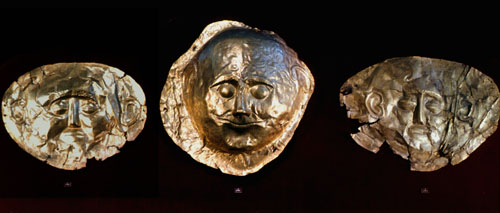The Excavation of Troy
In his new line of work as an archaeologist, Schliemann traveled extensively throughout Greece, Italy, Scandinavia, and many other European countries, in search of possible sites for excavation. His first and foremost quest was for the site of Homeric Troy, leading him to begin excavations in Turkey, at a site commonly believed to be the location of Troy. It was a fruitless venture, but, undeterred, he soon published a paper that identified Hissarlik as the actual site of the city. Schliemann’s excavation at Hissarlik began in 1871, continuing the work of Frederick Calvert, an English archaeologist. Calvert had dug there previously, but his findings didn’t indicate an existence of a Homeric Troy. Schliemann believed that Troy would be deeper in the ground, deeper than that of the Calvert dig, and he was anxious to find evidence of the great city. In his haste, his team dug quite carelessly through the upper levels, possibly destroying significant archaeological finds. After two years of digging, he discovered a grand trove of jewelry, which he dubbed, “Priam’s Treasure”, after the king of Troy, as described in Homer’s Iliad. Peers and scholars skeptically received the news, but, nonetheless, they were vast and important finds. (Daniel)
The unearthed Priam’s Treasure was a large collection of precious metal jewelry, vases, weapons, and more. This great treasure being found drew scrutiny and questions, and the legitimacy of it was challenged by later archaeological evidence, which held that Schliemann’s claim of it being the King Priam’s Treasure was a misinformed over-step and exaggeration. The reasoning for that being that the treasure discovered was from the time of Troy II, but Priam would have lived in the time of Troy VI or VII. Despite the misinformation, it cannot be denied that the find is large and very impressive, containing over 9,000 items. The artifacts are made of metals such as gold, silver, copper, and iron. A catalog of the treasure includes:
- Gold cups, bottles, and sauce boats
- Silver jars, bottles, cups, and dishes
- An electrum vessel
- Copper cauldron, pans, and bucket
- Silver Ingots (shape of blades or knife-blades)
- Tanged-and-slotted bronze spearheads
- Bronze Daggers
- Bronze flat axes
- Bronze chisels
- Gold bracelets
- Gold headdresses
- Earrings
- Rings
- Beads and other small objects
- Conical sequins
- Perforated bars
- Beads
- Silver vessels
(Easton)
The Excavation of Mycenae
Renowned and much discussed by the press, Schliemann set out to excavate the shaft graves of Mycenae, the ancient city said to be the seat of the great king Agamemnon, in 1876. He was following both the accounts of Pausanias, an ancient geographer who described Mycenae as a city that was very prosperous in gold, and the stories of Agamemnon as told by Homer. Once again, an excavation in search of proof of Epic Bronze Age evidence.
The first shaft graves excavated were those of Grave Circle A, located on the acropolis of Mycenae, southeast of the Lion Gate. It contains six shaft graves and is surrounded by two rows of upright slabs. Grave Circle B, holding the second set of shaft graves, is located directly south of the Lion Gate, duly noting that it was located outside of the city walls. Some of the findings from the grave circles include:
- Grave Steles
- Weaponry
- Metal Vessels
- Stone Vases
- Seals and Signet Rings
- Amber
- Pottery
Among the objects found in the shaft graves, some of the most important were a series of Golden Death Masks. These are masks that were placed on the bodies of the deceased in funeral rituals. Each mask was created by heating a sheet of gold, and laying it over a carved wooden background that molded the malleable gold, with further details being added by the use of hammers and sharp tools.
Questions of the masks arose, as it is easy to see that some masks are different than others. The most obvious acknowledgement is that some of them are three-dimensional, and have a bowl-like structure. Other small differences include the facial expressions differing and the masks simply not looking like they belong together. One mask in particular had further differences in the way of style. It had facial hair, and the ears were cut out to be outlined separately from the rest of the faceplate. Schliemann claimed this mask to be that of the great king Agamemnon, and he is quoted, “I have gazed upon the face of Agamemnon.”
At face value, this was an extremely significant find, given that the resting place of Agamemnon had yet been undiscovered. Unfortunately, it once again appears that Schliemann had exaggerated. Modern research suggests that the artifact is, in fact, from much earlier than Agamemnon’s supposed time, around 1550-1500 BC. It is now on display in the National Archaeological Museum in Athens. (Harrington)





